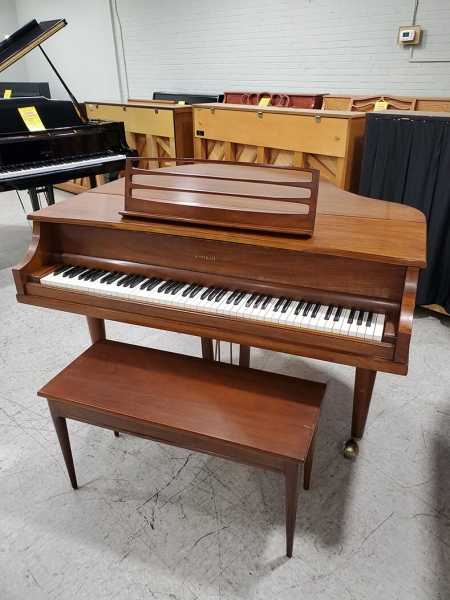

An incredible level of detail goes into their design and construction. Similarly, three different types of wood are used for the bridge caps, chosen for the most efficient transmission of tonal energy for a particular register. As an example, the maker of the Fazioli F156 baby grand, one of the finest pianos made, says that a critical factor in the sound of its pianos is the scientific selection of its woods, such as the “resonant spruce” obtained from the Val di Fiemme (where Stradivari reportedly sought woods for his violins.). High-end piano manufacturers have been very successful at perfecting the sound of baby grand pianos. Since tonal quality of a piano is directly affected by the size of the soundboard and strings, manufacturers fight to create the best sound output for every square inch of the baby grand. This new diminutive model – the baby grand – features a smaller soundboard and shorter strings – everything else remains the same. So, in order to downsize the grand piano, it would have to be the string length and the tail of the piano that could be altered, not the width. More innovation would come with actions and stringing inside the case but the keyboard width itself could not be made smaller and still satisfy the wide musical scope of pianists.

The 88-key keyboard had evolved (acoustic pianos with less keys were produced until the 1900’s) and become the standard piano width. So how do you downsize a grand piano to a “baby” grand? Upright pianos were being used because they didn’t take up a lot of floor space, but many people preferred the look of the three-legged design, if it was only smaller.

However, the increasing popularity of the piano in private homes, resulted in the need for a smaller grand piano. In time, larger concert halls and venues required more powerful sound, so the concert grand evolved into 9 and 10-foot pianos for professional solo and orchestral needs. Originally, in sizes ranging from 6 to 8 feet, they were used in salons and house concerts. Grand pianos, the three-legged “horizontally-sitting” stringed instruments were developed 300 years ago, an offshoot of the harpsichord and pianoforte.


 0 kommentar(er)
0 kommentar(er)
